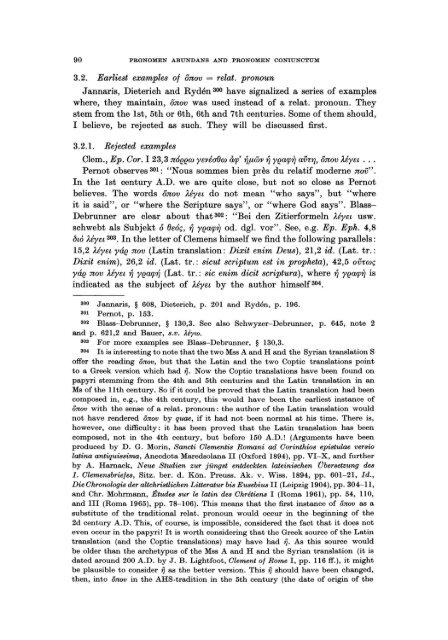Pronomen Abundans and Pronomen Coniunctum. A ... - DWC
Pronomen Abundans and Pronomen Coniunctum. A ... - DWC
Pronomen Abundans and Pronomen Coniunctum. A ... - DWC
You also want an ePaper? Increase the reach of your titles
YUMPU automatically turns print PDFs into web optimized ePapers that Google loves.
90 PRONOMEN ABUNDANS AND PRONOMEN CONIUNCTUM<br />
3.2. Earliest examples ot onov = relat. pronoun<br />
Jannaris, Dieterich <strong>and</strong> Rydén 300 have signalized a series of examples<br />
where, they maintain, onov was used instead of arelat. pronoun. They<br />
stem from the lst, 5th or 6th, 6th <strong>and</strong> 7th centuries. Some of them should,<br />
I believe, be rejected as such. They will be discussed first.<br />
3.2.1. Rejected examples<br />
Clem., Ep. Cor. I 23,3 n6eew yevéa()w àq/ iJftWV i} yeurpiJ ufJ-r'Yj, onov Uyet ...<br />
Pernot ob serves 301: "N ous sommes bien près du relatif moderne nov".<br />
In the lst century A.D. we are quite close, but not so close as Pernot<br />
believes. The words onov Uyet do not mean "who says", but "where<br />
it is said", or "where the Sctipture says", or "where God says". Blass<br />
Debrunner are clear about thaP02: "Bei den Zitierformeln Uyet usw.<br />
schwebt als Subjekt ó ()eóç, i} yeurpiJ od. dgl. vor". See, e.g. Ep. Eph. 4,8<br />
















